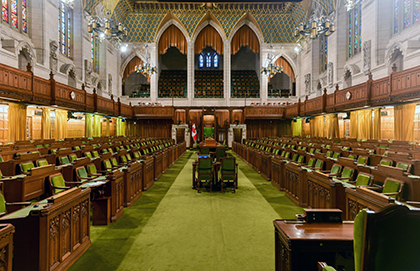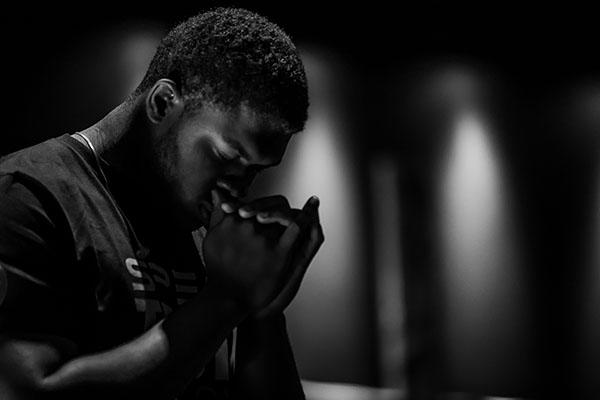Affection and popularity are truly fleeting for Canadian political leaders. Dissatisfaction runs deep. And there may be good reason for it.
It’s hard to come to any other conclusion from the results of the 2019 general election. None of the parties won a ringing endorsement after a very negative and divisive campaign. Canada is more disunited than it has been in decades. Governing for the common good will be difficult in a divided parliament. Red flags are up on every major file of concern for Canadians.
The minority government of 2019 is as different from the majority of 2015 as baseball is from hockey – but it’s still a game. The fact that the number of Liberal seats plus New Democrat seats equals more than 170 (the number required to pass anything in the House of Commons) means that the government led by Prime Minister Justin Trudeau will likely be more left-wing or progressive in its ideology than it was after 2015. And if Liberal-NDP cooperation won’t work, a nationalist and left-leaning Bloc Québécois with a caucus that has tripled in size could still give a minority Liberal government the votes it needs to pass bills in the House of Commons.
How long could such an arrangement last? That’s anybody’s guess. Governing is complicated in a minority situation, but in many cases, parties’ willingness to precipitate an election depends on less-than-noble considerations. Potential leadership discussions have yet to work themselves out. A party’s ability to fund a campaign comes into play. Likewise, some MPs first elected in 2015 might worry about losing an election before they can qualify for their valuable pensions in 2021. Of course, politics is also a zero-sum game. When one party senses an electoral advantage, likely another sees a disadvantage, making the situation still dicier.
Even where some Parliamentary stability exists, how long it lasts will depend, at least partially, on the ability to broker enough interests to cobble together a majority vote on national issues. That’s going to be difficult.
The campaign exposed divisions within Canada that will take much longer to assess and address than counting ballots. Unlike any campaign in recent memory, the popularity of both the Liberals and Conservatives declined during the campaign. The prime minister who had a majority in Parliament and faced three first-time leaders as his prime opponents lost votes and seats, signalling disagreement with him and his government. Indeed, Trudeau’s party gathered only 33 per cent of the popular vote, compared to 34.4 per cent for the Conservatives who assume the Official Opposition. This doesn’t seem to have chastened the prime minister. Trudeau still timed his victory speech to silence the message of Opposition Leader Andrew Scheer, earning the scorn of pundits as diverse as NDP’s Nathan Cullen and former Saskatchewan premier Brad Wall.
Governing Canada with only 33 per cent of the popular vote and huge swaths of the country without government representation will require remarkable wisdom and humility.
Beyond that matter there are at least two sleeper issues that could create crises large enough to divide Parliament and throw off political agendas: Indigenous affairs and foreign policy. Events in Indigenous communities and around the world could bring surprises that cause coalitions to come apart.
Meanwhile, there are three existing areas of concern.
The Economy and Fiscal Restraint
Making life more “affordable” was a major priority in the campaign for all parties. However, the overall fiscal fitness of government and budgets took a back seat to pricey campaign promises of spending or tax-cut packages. In 2015, the Liberals were seen as bold in promising deficit spending as an “investment in the middle class.” Yet they promised to have the budget back into balance by the time of this election. In this campaign, the Liberals promised deficit spending of over $20 billion per year while maintaining that the debt-to-GDP ratio is the most relevant measure. The Conservatives meanwhile promised to return the books to balance by 2024–25 but followed a similar short-term path of significant spending proposals and tax reduction promises. The other parties in Parliament, which hold the balance of power, are all wedded to continued deficits with seemingly little concern for bringing the books back into the black.
The normalization of government deficits gives new life to an old trend. The 1970s and 1980s were a time of growth in government fueled by deficit spending. In the 1990s and 2000s balanced budgets became the norm at both the federal and provincial levels. While the 2008 recession marked a return to federal deficits in order to provide an economic stimulus, there was an implicit obligation to, and serious concern with, returning to balanced accounts soon. The 2015 campaign debate centred on the speed of that reckoning and return, not whether we should. This new normal is notable, not least because of its implications for the nation’s fiscal health for decades to come. It’s also unclear how long deficits and debts will stay on the public policy backburner.
National Unity
The resurgence of the Bloc Québécois came through its appeal for stronger provincial rights. Unlike previous pitches more focused on sovereignty, the Bloc’s campaign focused on nationalism and provincial autonomy. While Bill 21 and the French notions of laïcité were part of the appeal, so was the resistance to the building of pipelines. Political leadership and voters in Alberta and Saskatchewan interpreted this as a poke in the eye to a province that has been a contributor to equalization payments (in contrast to Quebec, which has been a beneficiary). It will take much more than a day-after analysis to properly ascertain what this all means, but it seems fair to conclude that national unity could easily face new challenges amid reinvigorated provincial conflict. Polls regarding Western separation are probably overstated—Westerners are deeply loyal Canadians—but that doesn’t mean Western Canadians are simply going to acquiesce to federal objections that hamstring their province’s economy. Today’s situation has some parallels with the National Energy Program that caused so much fury in the West in the early 1980s. Most instructive of what future dialogue on national unity will look like is Alberta’s announcement of hearings and an expert panel to examine the province’s place in Confederation.
At a most basic level, the election results create competing challenges. The Liberals will be pressured to implement a more left-liberal agenda, which includes preventing pipelines from being built, in spite of having bought the Trans-Mountain Pipeline (TMX) for $4.3 billion and promising pipeline expansion. With no caucus members from Alberta and Saskatchewan, and facing pressure from possible left-wing allies in the Commons, the Liberal government may even find it easier than ever to give up on pipelines. Doing so would only deepen the sense in the West that the realities of the region’s economic dislocation are lost on the rest of the country, especially urban centres in central Canada. Campaign rhetoric and the election results have done little to credibly provide a counter-narrative.
Bloc Leader Yves-François Blanchet, meanwhile, wasted no time in his election night speech reminding Canadians that Quebec has never signed onto the Constitution. He has set the stage for reopening long dormant constitutional debates. Reminding voters that the Bloc will evaluate its support for the Liberal government based on its prioritizing the interests of Quebec rather than that of Canada complicates the central priority to govern for the common good.
There are other overlapping divisions to note as well, between the Prairies and Ontario, as well as between cities and rural areas. The clearest example of this came with former Conservative cabinet minister and leadership contender Lisa Raitt losing her seat in Milton, Ont. Her increasingly urban riding drifted toward the Liberals – completing a trend that had started in 2015. Likewise, long-time Liberal cabinet minister Ralph Goodale lost in Regina, Sask., giving the Conservatives a seat they had long sought. Increasingly, we’ve seen larger cities, especially in Ontario, line up behind the Liberals while the Western provinces and more rural areas become more solidly Conservative blue.
In some ways, it seems Canada is moving from two solitudes to many, with everyone voicing their alienation. The rural-urban divide might be one of the sharpest forms of alienation to emerge from the 2019 election.







